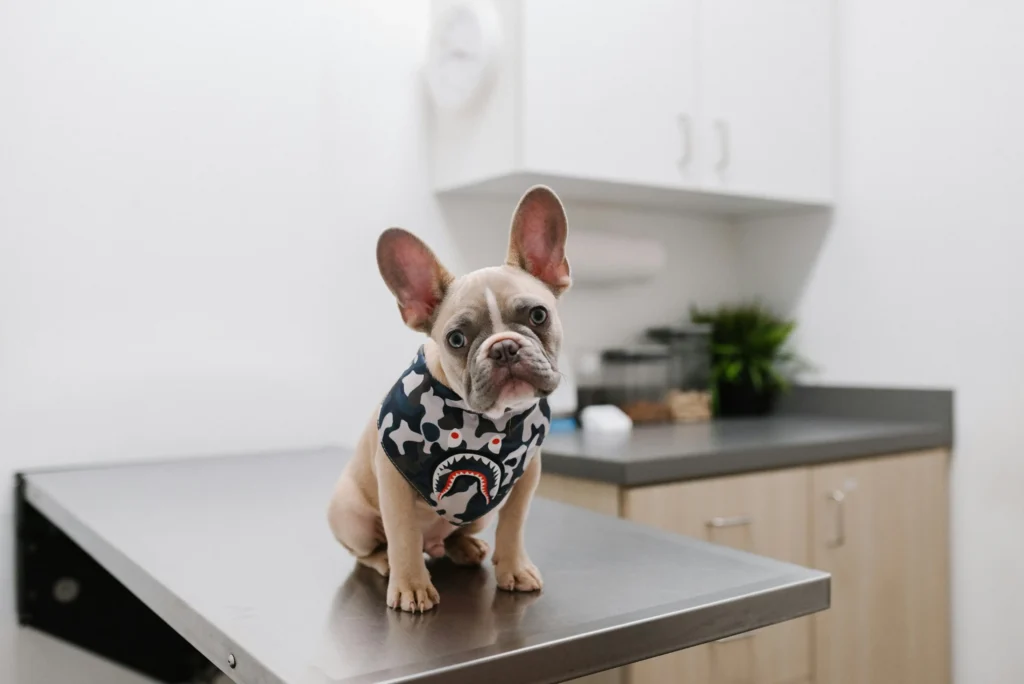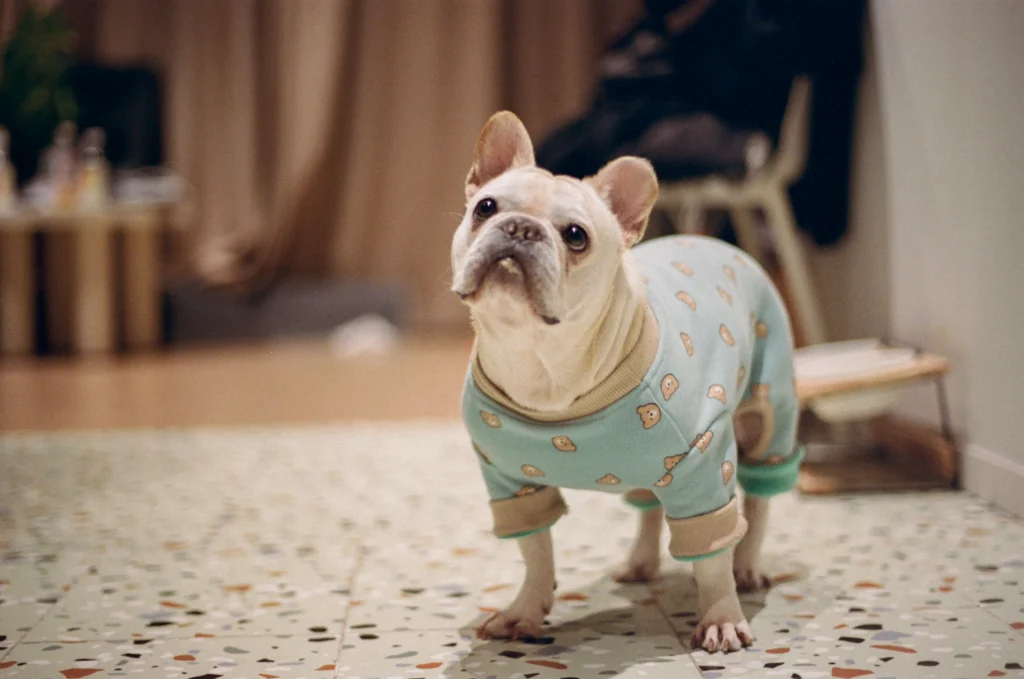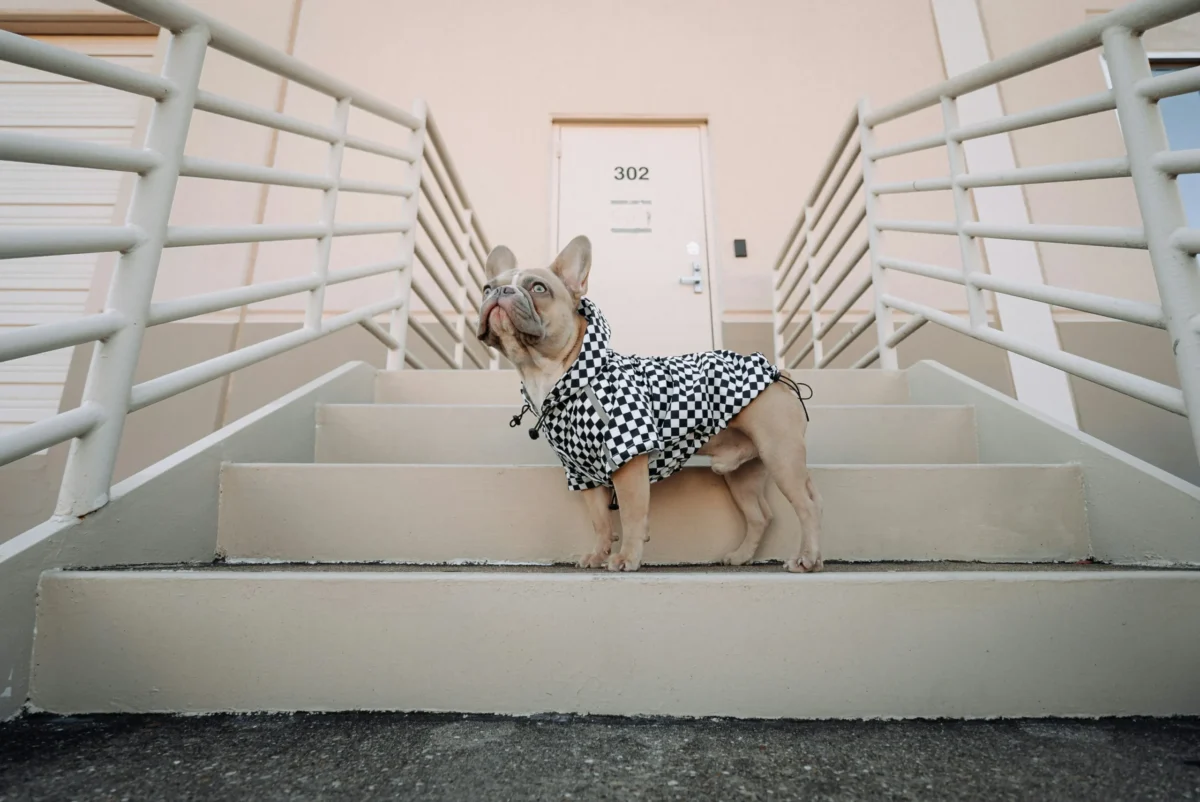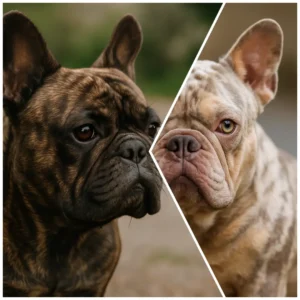Quick Answer
Choose clothes to match the day, not the label. Cotton is soft and breathable for lounging and mild weather. Merino wool gives top warmth-to-weight and stays fresher on cool, dry walks. Fleece is cozy and quick-dry for crisp conditions. Measure neck, chest, back first and make sure armholes don’t rub before you decide.
TL;DR
- Cotton = airy comfort for home, errands, and mild days; soft and easy to wash.
- Merino = warm-for-its-weight with natural stretch and odor resistance; great for cool, dry walks or travel.
- Fleece = cozy & quick-dry for brisk mornings/evenings; choose lighter fleece indoors.
- Fit beats fabric: measure neck/chest/back, check armholes and belly cut, then do a quick movement test.
- Be seen: reflective details help at dawn/dusk; keep ID and microchip info current.
How to Use This Guide?
This is a general-information buyer’s guide written for real life with a Frenchie—not a medical or product-promotion piece. It blends neutral registry language about the breed’s compact build and smooth coat with practical tips for fit, comfort, and fabric choice. You’ll learn how to measure once, choose smartly for the weather, and avoid the usual rubbing/bunching problems that make dogs dislike clothes.

Fit First: Measure Before You Pick Fabric
Getting the size right prevents returns and, more importantly, keeps your dog comfortable.
Take three measurements (soft tape):
- Neck circumference – where a collar naturally sits.
- Chest girth – around the deepest part of the ribcage just behind the front legs (the number most size charts prioritize).
- Back length – from the base of the neck (between shoulder blades) to the base of the tail. Most Frenchies prefer a hem that stops before the tail base for free movement.
Check the pattern details:
- Armhole depth – the opening should clear the elbows; rubbing at the underarm is the #1 complaint.
- Belly cut – high enough to stay clean on potty breaks.
- Neckline – should sit at the collar point without pressing on the throat.
- Closures – low-bulk Velcro or snaps placed to avoid the armpits; secure but never tight.
1-minute movement test: Put the garment on and ask for sit → down → stretch → step up a low step. Watch for:
- Drag lines across the chest,
- Bunching behind the elbows,
- Hem snagging at the tail base,
- Rolling fabric at the withers.
Any of those = wrong size or pattern.
Fabric Face-Off: Cotton vs Merino vs Fleece
Cotton (natural, breathable)
What it feels like: Soft, breathable, familiar. 100% cotton breathes well but can hold moisture; cotton-spandex blends keep their shape better.
Best uses:
- Indoor lounging, daycare days, and car rides
- Mild spring/fall weather
- Post-bath or grooming when you want a gentle layer
Nice extras: Easy stain pretreat, low cost, widely available, comfy against short coats.
Watch-outs:
- Slow to dry if soaked; can feel chilly in wind if damp
- Can bag out at the elbows unless blended with a little elastane
- Heavy jersey can trap heat indoors—mid-weights are more versatile
Owner tip: If you want a house shirt that stays neat, look for a mid-weight cotton blend with a bit of stretch and a higher belly cut.
Merino (fine wool, performance natural)
What it feels like: Superb warmth-to-weight, breathes well, and naturally resists odor. Often blended or knit tight for durability. Many pieces are machine-washable (check the label).
Best uses:
- Cool, dry walks where you want warmth without bulk
- Travel days—packs small and stays fresher between washes
- Layering under a light shell when weather turns breezy
Nice extras: Stays warm even when a bit damp; good stretch; comfortable for dogs who dislike stiff fabrics.
Watch-outs:
- Fine, open knits can snag on Velcro or brush
- Needs gentle wash and low heat dry
- The wrong knit (too open) can feel breezy—tight knits block wind better
Owner tip: For shoulder-season versatility, pair merino + thin wind/rain shell. You can remove the shell when you step indoors and keep the comfy base layer on.
Fleece (synthetic, quick-dry)
What it feels like: Plush, durable, fast-drying, and forgiving. Traps air to keep warmth; great after a damp outing.
Best uses:
- Crisp mornings/evenings
- Quick potty breaks or errands in brisk weather
- After beach or bath when you want something that dries fast
Nice extras: Washes easily, holds shape, stands up to rough play better than delicate knits.
Watch-outs:
- Less breathable than merino; can feel hot in a warm café or car
- Collects hair (go for smoother-face fleece if lint bothers you)
- Static in very dry climates—lightly damp hands before petting reduce cling
Owner tip: Indoors, choose lightweight fleece or vented designs; outdoors, a mid-weight vest that frees the shoulders is a great everyday pick.

Visual Fit Guide (What to Check on the Dog)
Shoulders & armholes – no pulling lines; elbows move freely.
Neckline – sits at collar point without gaping or pressing the throat.
Hem & belly – hem clears the tail base; belly cut allows a clean potty posture.
Spine & withers – fabric lies flat, no rolling ridge.
Photo ID Tips (Checklist)
A good photo set saves time on size exchanges, rentals, or travel forms.
- Lighting: bright, indirect daylight; avoid harsh shadows.
- Background: plain, contrasting wall—light for dark brindle; mid-tone for cream/fawn.
- Angles: front (head/chest), left profile, right profile, full-body side, and top-down.
- Details: close-ups of armholes, neckline, and hem while the dog is sitting and standing.
- File names: “DogName_Date_View.jpg” (e.g., “Milo_2025-10-02_ProfileRight.jpg”) so you can find them fast.
Standards Snapshot (handy for paperwork and sizing language)
A tiny reference owners like to keep with their documents and size notes.
| Registry | Accepted wording | Notes |
|---|---|---|
| AKC (U.S.) | French Bulldog | Breed page with identity basics and overview: akc.org |
| The Kennel Club (UK) | French Bulldog | Current UK breed standard (compact, smooth coat): thekennelclub.org.uk |
| FCI | Bouledogue Français / French Bulldog | Standard No. 101 (English PDF): fci.be |
These are identity references and neutral wording sources; they’re not medical resources.
Layering & Weather Scenarios (Real-World Examples)
Indoor day + quick errands
- Mid-weight cotton blend shirt with tidy belly cut so it stays clean.
- Add a clip-on reflective tab for dusk pickups.
- Keep a spare in the car; rotate to air out.
Cool, dry walk with light breeze
- Tighter-knit merino base for warmth without bulk.
- Pocketable wind shell in case clouds roll in.
- If you step inside a store, remove the shell and keep merino on.
Crisp morning potty break
- Lightweight fleece vest that frees shoulders and dries fast.
- If it’s sunnier later, you won’t be stuck with a heavy layer.
After beach or bath
- Towel dry, then a fleece layer to pull moisture away.
- Hang the fleece to air; it will be ready again quickly.
Care & Storage (Keep Clothes Looking New)
- Follow the label. It matters—especially for merino.
- Zip/close first, then wash. Prevents snags and distortion in the machine.
- Delicates bag for merino or fine knits.
- Cold or cool water; low heat dry for most items; air-dry when possible.
- De-lint fleece with a fabric shaver occasionally; it’ll look new again.
- Hang to air between wears. Especially for merino—often you can skip a wash.
- Off-season storage: clean, fully dry, then store flat in a breathable bag.
Myths & Mislabels (Quick Busts)
- “Fleece is always the warmest.” Actual warmth depends on weight, loft, and airflow. A mid-weight merino often feels warmer outdoors for its weight.
- “Cotton is useless on cool days.” Cotton is excellent for mild weather and indoor comfort—just don’t stay wet and windy for long.
- “Tighter means more secure.” Clothes should be fitted and flexible, not tight. Tight armholes cause elbow/underarm rub.
- “Outfit should match a ‘rare color.’” Skip buzzwords and focus on fit, freedom of movement, and visibility.
Light Care Basics
Grooming & shedding: A quick weekly brush keeps hair off fabrics and helps outfits last.
Home comfort: Cool, well-ventilated rest spots; hang garments to air between uses.
On the go: Keep ID tags and microchip registration up to date; add reflective touches for low-light walks.
For health concerns, consult your veterinarian.
FAQs
How do I pick cotton, merino, or fleece for today’s plans?
Start with weather + activity. Cotton works for mild indoor days and errands. Merino is ideal for cool, dry walks—warm without bulk and less smelly. Fleece is your quick-dry, cozy option for crisp air or after a damp outing. When wind or drizzle shows up, add a thin shell over merino or fleece.
What’s a fast way to confirm the fit at home?
Do the sit → down → stretch → step test. Watch the chest and armholes: you want smooth fabric over the shoulders, free elbows, and a belly cut that stays clear when your dog squats. If the hem bunches at the tail base, try a shorter pattern.
Do reflective details actually matter?
Reflective trim helps at dawn, dusk, and in winter when it gets dark early. A small tab or piping can make a big difference when crossing streets or walking near bikes. Pair reflective touches with updated ID.
How often should I wash different fabrics?
Follow the label. Cotton and fleece wash easily; fleece dries quickly. Merino often needs less frequent washing—airing it out keeps it fresh. Close Velcro and zips before washing to protect the fabric.
Can a sweater replace a raincoat?
No. Knits and fleece keep your dog warm; a light shell blocks wind and light rain. Layer them when weather is mixed so you can remove or add the shell as conditions change.
Any signs the pattern isn’t right even if the size seems okay?
Chafing at the elbows, fabric cutting into the throat, rolling at the withers, or a hem trapping the tail base are pattern red flags. Switch to designs with deeper armholes, raglan-style shoulders, or a shorter back.
Key Takeaways
- Measure first, test movement: neck, chest, back—then the 1-minute sit/down/stretch/step check.
- Match fabric to the day: cotton for mild/indoors, merino for cool dry walks, fleece for crisp and quick-dry needs.
- Comfort = free shoulders + clean belly cut: avoid tight armholes and bulky closures.
- Stay visible & identified: reflective touches help; keep microchip and ID current.
- Paperwork over hype: verify registry claims and choose function over buzzwords.
Sources
- AKC — French Bulldog: https://www.akc.org/dog-breeds/french-bulldog/
- The Kennel Club (UK) — Breed Standard: https://www.thekennelclub.org.uk/breed-standards/utility/french-bulldog/
- FCI — French Bulldog Standard No. 101 (English PDF): https://www.fci.be/nomenclature/standards/101g09-en.pdf
- FBDCA — Breed Information: https://frenchbulldogclub.org/breedinformation/
- FBDCA — Breed Standard: https://frenchbulldogclub.org/breedstandard/
- UC Davis Veterinary Genetics Laboratory — Dog Coat Color (overview): https://vgl.ucdavis.edu/resources/dog-coat-color
- AKC Expert Advice — Dog Winter Coats (lifestyle): https://www.akc.org/expert-advice/lifestyle/dog-winter-coat/
- The Kennel Club (UK) — Winter safety & visibility: https://www.thekennelclub.org.uk/health-and-dog-care/health/health-and-care/a-z-of-health-and-care-issues/winter-dangers-to-dogs/
Disclaimer
This article provides general-information about fit, fabrics, and everyday use for French Bulldog clothing. It is not medical, legal, or professional advice. For any health concerns or special needs, consult qualified professionals and follow product labels and local rules.



